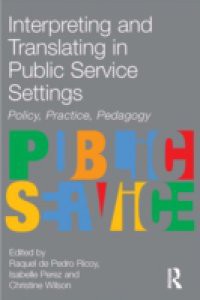Translation, interpreting and other forms of communication support within public sector settings constitute a field which deals, quite literally, with matters of life and death. Overshadowed for many years by interpreting and translating in other domains, public sector interpreting and translating has received growing attention in recent years, with increasingly mobile populations and human rights, diversity and equality legislation shining the spotlight on the need for quality provision across an increasing range and volume of activities.Interpreting and Translating in Public Service Settings offers a collection of analytically-grounded essays that provide new insights into the reality of the interaction in public sector settings and into the roles and positioning of the participants by challenging existing models and paradigms. Issues of local need, but with global resonance, are addressed, and current reality is set against plans for the future. The triad of participants (interpreter/translator, public sector professional and client) is investigated, as are aspects of pedagogy, policy and practice. Empirical data supports the study of topics related to written, spoken and signed activities in a variety of professional settings. Bringing together academics and practitioners from different countries in order to explore the multidisciplinary dimension of the subject, this collection should serve as a valuable reference tool, not only for academics and students of public sector interpreting and translating, but also for practising linguists, providers of language services and policy makers.
















